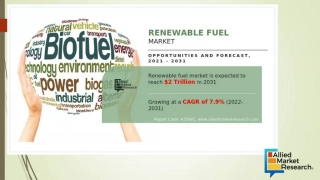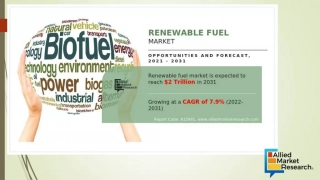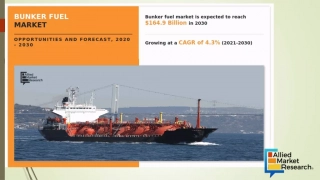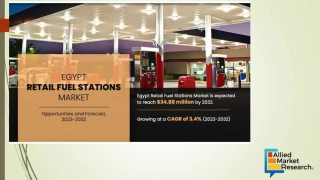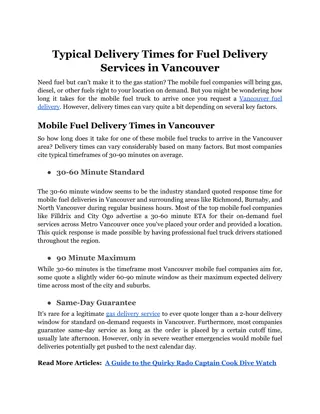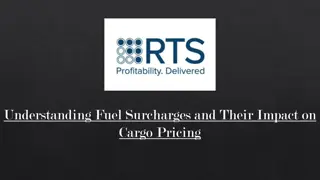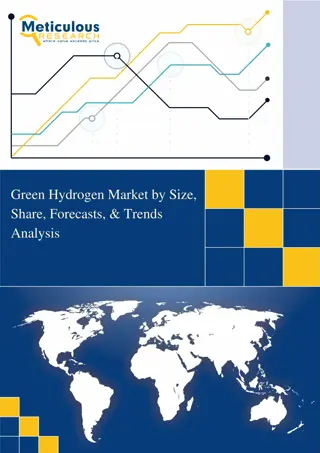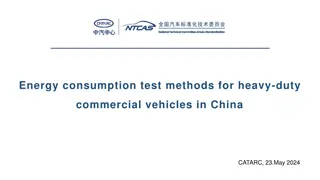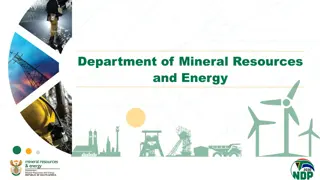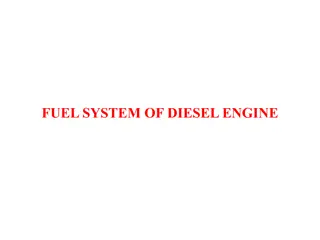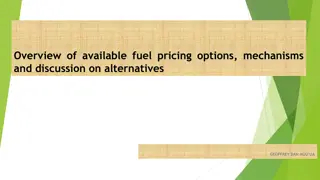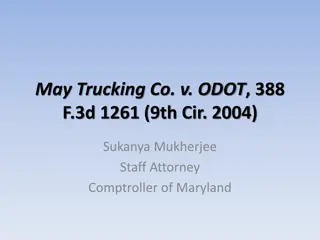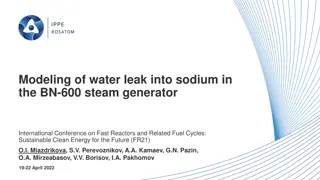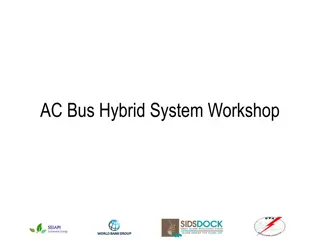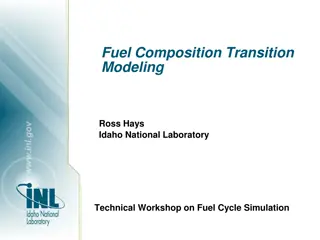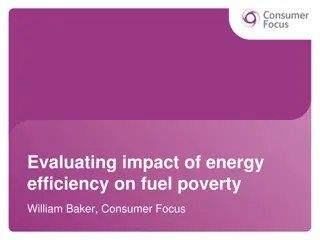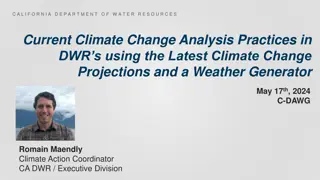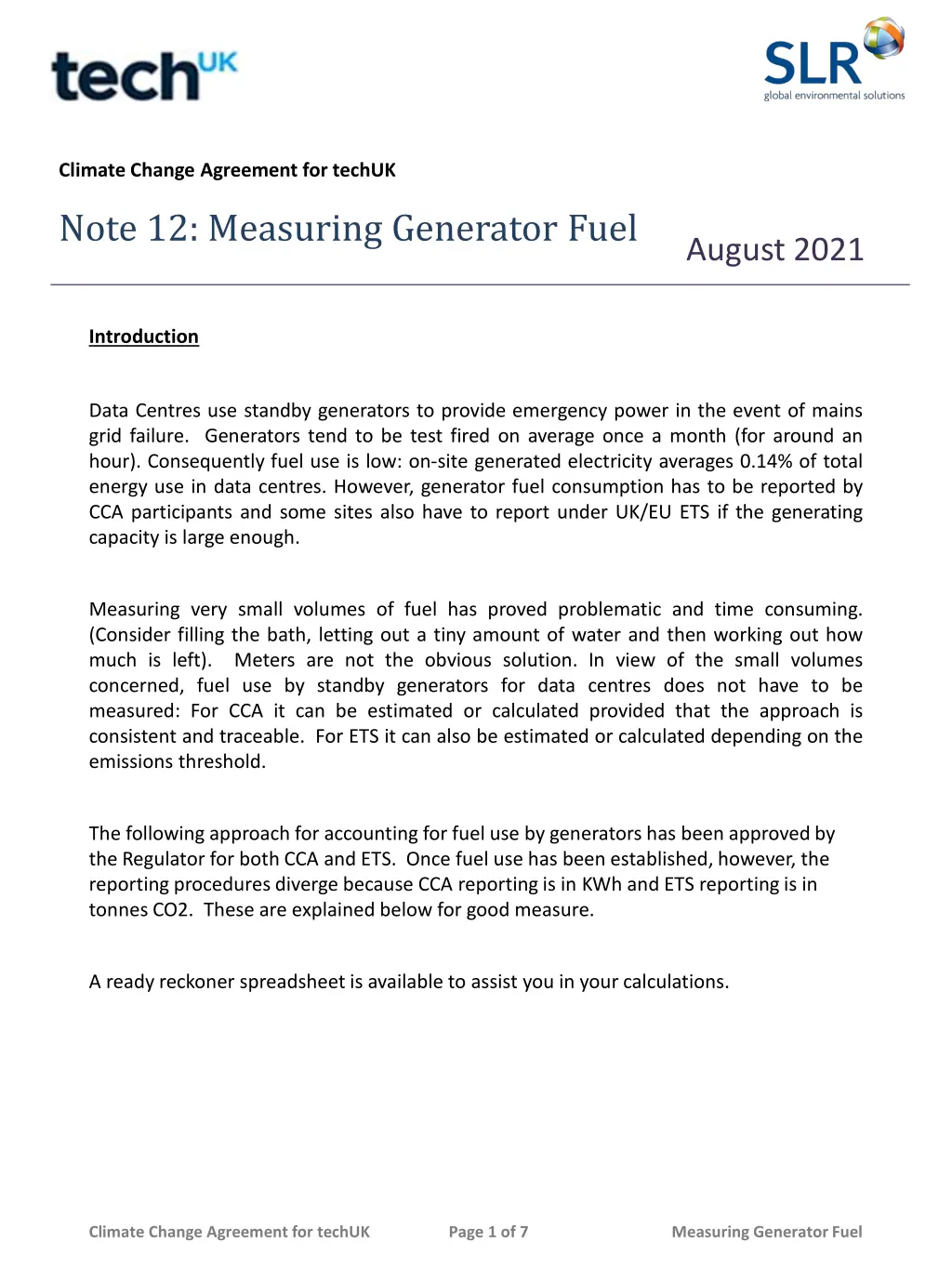
Measuring Generator Fuel in Data Centres: CCA & ETS Guidelines
Learn about the approved approaches for measuring generator fuel consumption in data centres for Climate Change Agreements (CCA) and the EU Emissions Trading System (ETS). Find out when fuel consumption needs to be measured, estimated, or calculated, and understand the reporting procedures for both CCA and ETS participants. Get insights on the factors affecting fuel consumption calculations and compliance requirements.
Uploaded on | 1 Views
Download Presentation

Please find below an Image/Link to download the presentation.
The content on the website is provided AS IS for your information and personal use only. It may not be sold, licensed, or shared on other websites without obtaining consent from the author. If you encounter any issues during the download, it is possible that the publisher has removed the file from their server.
You are allowed to download the files provided on this website for personal or commercial use, subject to the condition that they are used lawfully. All files are the property of their respective owners.
The content on the website is provided AS IS for your information and personal use only. It may not be sold, licensed, or shared on other websites without obtaining consent from the author.
E N D
Presentation Transcript
Climate Change Agreement for techUK Note 12: Measuring Generator Fuel August 2021 Introduction Data Centres use standby generators to provide emergency power in the event of mains grid failure. Generators tend to be test fired on average once a month (for around an hour). Consequently fuel use is low: on-site generated electricity averages 0.14% of total energy use in data centres. However, generator fuel consumption has to be reported by CCA participants and some sites also have to report under UK/EU ETS if the generating capacity is large enough. Measuring very small volumes of fuel has proved problematic and time consuming. (Consider filling the bath, letting out a tiny amount of water and then working out how much is left). Meters are not the obvious solution. In view of the small volumes concerned, fuel use by standby generators for data centres does not have to be measured: For CCA it can be estimated or calculated provided that the approach is consistent and traceable. For ETS it can also be estimated or calculated depending on the emissions threshold. The following approach for accounting for fuel use by generators has been approved by the Regulator for both CCA and ETS. Once fuel use has been established, however, the reporting procedures diverge because CCA reporting is in KWh and ETS reporting is in tonnes CO2. These are explained below for good measure. A ready reckoner spreadsheet is available to assist you in your calculations. Climate Change Agreement for techUK Page 1 of 7 Measuring Generator Fuel
Basic principles 1. CCA participants and ETS participants emitting below 1000 tonnes CO2 per annum are not obliged to measure fuel consumption. They can use estimates and calculations based on generator run times, load and capacity. 2. ETS participants emitting between 1000 tonnes and 25,000 tonnes CO2 per annum need to add further evidence from fuel invoices. 3. Information needs to be logged and auditable. Operators need to explain why they have applied a particular methodology. 4. The factor used by ETS participants for converting fuel litres to tonnes can be found in DUKES (See table below) but standard factors may be accepted with adequate justification. 5. For ETS participants, data must be independently verified. STEP 1: (ETS only) check your emission threshold NB: CCA participants who are NOT in ETS should skip this step. Firstly you need to confirm that your emissions threshold is below 1000 tonnes CO2. Most data centre emissions are below 100 tonnes and you would need to have suffered a significant mains outage or do a lot of STOR to be anywhere near this threshold. As a rule of thumb you would have to: Run five 4MW generators at 50% load constantly for ten days or Consume more than 350,000 litres of gasoil in a year (1000 litres produces about 2.7TCO2) You can double check with the Ready reckoner. If, as is very likely, your emissions are below 1000 tonnes then the following approach will allow you to be compliant with both ETS and CCA. If you are in ETS and your emissions are above 1000 tonnes but below 25,000 tonnes CO2 then fuel invoices would be required as the primary method for deriving fuel use. The calculation could be used as a sense check. Climate Change Agreement for techUK Page 2 of 7 Measuring Generator Fuel
STEP 2: Calculate or estimate your emissions Emissions are a factor of the type and quantity of fuel, the calorific value of the fuel, a conversion factor and an oxidation factor. A series of calculations turns the fuel into CO2 emissions. For CCAs you only need to report in KWh so you don t need to do the full set of calculations. For ETS you need to go the whole hog and report in tonnes CO2. For most operators the trickiest thing is working out how many litres of fuel have been consumed. To get the quantity of fuel you need to know the run time of the generator, the load and the capacity. Alternatively you can use a fuel meter but you will need to ensure that it is calibrated and correctly positioned. Our Ready Reckoner, kindly prepared by Prof. Ian Bitterlin, estimates your fuel consumption based on run time, load and capacity. The subsequent calculations are more straightforward and the steps you need to take to report emissions in line with EUETS are set out in Table 1 below, and in the Annexe, which guides you through the ETSWAP pages. The Ready Reckoner does these calculations too but is calculated using factors valid in 2016 which might not remain the same in future years. STEP 3: Ensure you have a) A clear justification for the route you have taken, for example if you have calculated rather than measured your consumption of generator fuel because emissions from burning generator fuel are minimal (well under the 1000t threshold) and calculating from generator characteristics will provide a more consistent approach to measuring consumption than readings from tank fuel gauges. a) An audit trail (ie you have retained documentation providing a record of: Generator specifications (manuals and /or photographs of the plates) Load Run time o dates, o times and o duration STEP 4: Validate if necessary and submit For CCA you just need to submit the data on your reporting template. For ETS participants you need to have your data externally verified. Climate Change Agreement for techUK Page 3 of 7 Measuring Generator Fuel
Table 1 Factor Litres of fuel Value Use the Ready reckoner 10.9 (CV for gasoil) What is it This is a function of run time, generator capacity and load Example 1000 litres Calorific Value (CV) This is the factor that converts the fuel into kWh. 10900 kWh This is the figure you report for CCA 1000 litres / 1171 = 0.85 tonnes Tonnes of Fuel Varies each year, currently 1171 (litres per tonne) NB for low emissions the EA would consider accepting a standard factor if an acceptable one were proposed. This factor converts litres of fuel into tonnes of fuel. It is published in the Digest of UK Energy Statistics (DUKES) https://www.gov.uk/government/publications/greenhou se-gas-reporting-conversion-factors-2021 In reality you can stop at this point for ETS as well as ETSWAP* will do the rest of the calculations. However, these are included below for good measure. Net Calorific Value (NCV) NB: This factor is pre-populated in ETSWAP, just select the correct fuel from the drop down lists. monitoring and reporting: the country-specific factor list Varies each year, currently 43.56 GJ/tonne This is taken from the national inventory data available here: https://www.gov.uk/government/publications/parti cipating-in-the-uk-ets/participating-in-the-uk-ets https://www.gov.uk/guidance/participating-in-the-eu-ets under the headings: Using UK greenhouse gas inventory data in UK (EU) ETS 0.85 Tonnes * 43 = 37.026 GJ Emissions Factor (EF) Varies each year, currently 74.93 TJ / tonne NB This factor is pre-populated in ETSWAP, just select the correct fuel from the drop down lists. This is taken from the national inventory data available here: https://www.gov.uk/government/publications/parti cipating-in-the-uk-ets/participating-in-the-uk-ets https://www.gov.uk/guidance/participating-in-the-eu-ets under the headings: Using UK greenhouse gas inventory data in UK (EU) ETS monitoring and reporting: the country-specific factor list 37.026 GJ *74.93 /1000 (GJ/TJ) = 2.77 Tonnes CO2 Oxidation factor (UK/EU ETS) or Primary energy factor (CCA) Full Calculation 1 UK/EU ETS uses an oxidation factor that measures the % of carbon oxidised during combustion. CCAs use calculations based on primary energy. Both gas oil and fuel oil have oxidation and primary energy factors of 1 Tonnes CO2 * NCV * EF * OxF 2.77*1 = 2.77 Tonnes CO2 2.77 TCO2 This is what you report for ETS *See Annexe for ETSWAP process. Climate Change Agreement for techUK Page 4 of 7 Measuring Generator Fuel
Contacts and Links For CCA queries: techUK CCA helpdesk: Email: techUK@slrconsulting.com Tel: +44 (0)844 800 1880 Don t forget that there is a directory of CCA related guidance materials freely available on the techUK website (scroll down below the main description to the links) For ETS queries We have a number of basic guidance materials on EUETS, but these are not intended to be a substitute for the formal guidance provided by government and the EA s ETS helpdesk should be your first port of call for technical enquiries. techUK Data Centres Council Communication on ETS techUK guidance note on CCA, ETS and CRC techUK briefing on ETS inclusion criteria techUK ETS Group Compliance Roadmap: understanding regulatory obligations for data centre combustion plant Environment Agency ETS helpdesk: ethelp@environment-agency.gov.uk Either visit the ETS website: https://euets.environment-agency.gov.uk (predicated around registering a new facility) Or visit gov.uk website: https://www.gov.uk/guidance/participating-in-the-eu-ets (generic information about the scheme) For general or policy related queries regarding data centres Emma Fryer, Associate Director, techUK Emma.fryer@techuk.org Acknowledgements We are very grateful to the following for their help in preparing this guide Professor Ian Bitterlin, Critical Facilities Consulting Dan Clarke, Environment Agency Mike Hughes, Environment Agency Lucinda Peart, SLR Consulting Dave Smith, DataCentred Tim Arnold, 6DG Pip Squire, Ark Jon Burrows, Schneider Electric Climate Change Agreement for techUK Page 5 of 7 Measuring Generator Fuel
Annexe: How to report emissions in ETSWAP 1) Insert tonnes of fuel here. 3) Select the units here 4) Select yes 5) Click this Climate Change Agreement for techUK Page 6 of 7 Measuring Generator Fuel
For further information please contact SLRs techUK CCA helpdesk: +44 (0)844 800 1880 techUK@slrconsulting.com or visit www.techuk.org/developing-markets/data-centres.html The full suite of techUK CCA Guidance Notes are listed below and can be accessed via contacting the helpdesk or visiting the website. Guidance Note Title 1 What is a CCA 2 Transferring Ownership of a CCA 3 techUK CCA Administration Charges 4 Completing HMRC PP10 and PP11 Forms 5 Timetable of techUK CCA Activities 6 Obligations under your CCA including audits 7 Reporting data at each Target Period 8 How CCAs interact with other schemes 9 Glossary and Abbreviations 10 What happens if... 11 Submetering and base year 12 Measuring Generator Fuel 13 State Aid Transparency reporting 14 Penalties for non compliance 15 Application Documentation 16 Datacentre CCA eligibility Climate Change Agreement for techUK Page 7 of 7 Measuring Generator Fuel

